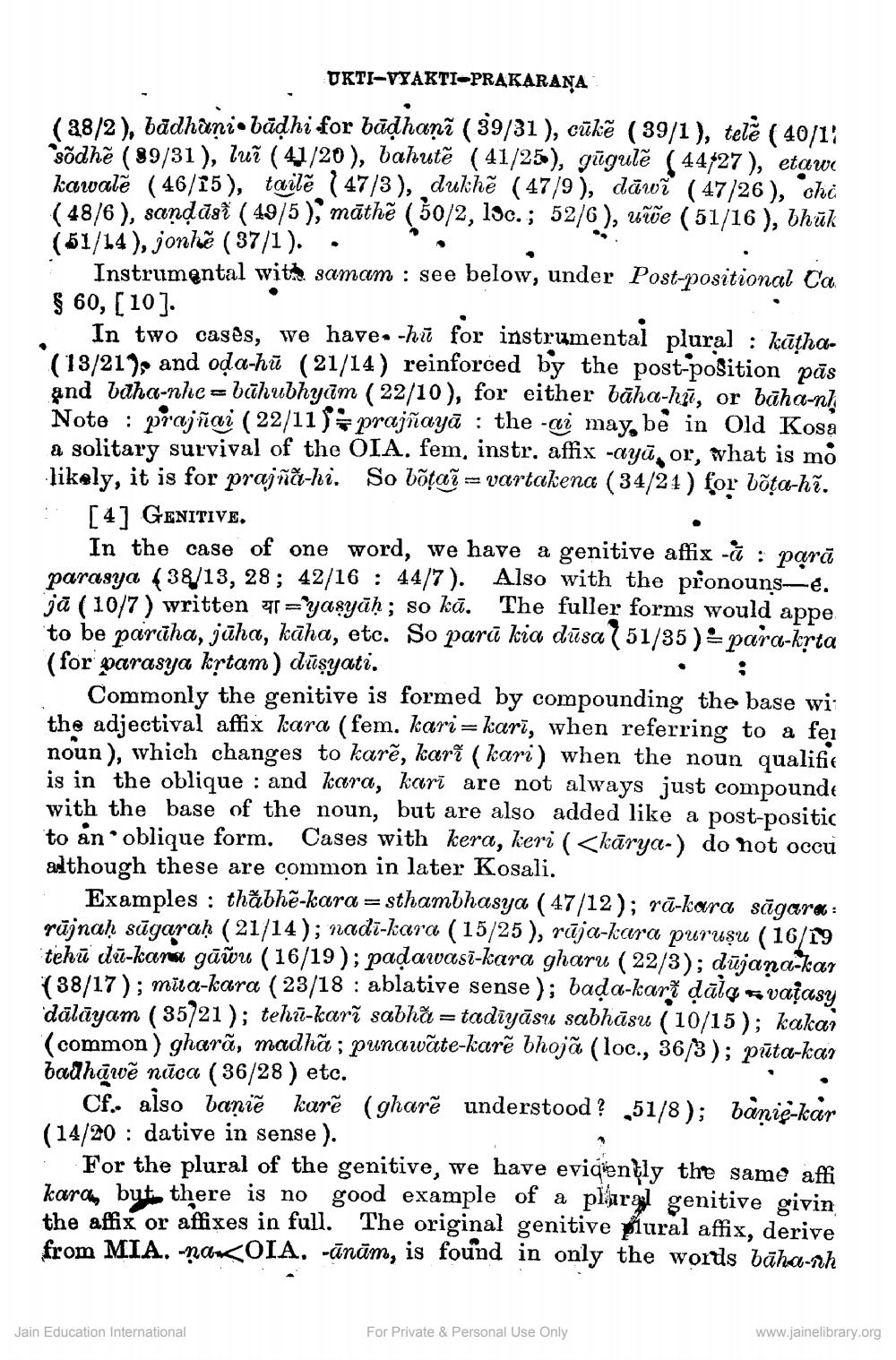________________
UKTI-VYAKTI-PRAKARANA
(38/2), badhuni bāḍhi for bāḍhanî (39/31), cūkě (39/1), tele (40/1 sõdhe (89/31), lui (41/20), bahute (41/25), gugule (44/27), etaw kawale (46/15), taile (47/3), dukhe (47/9), dawr (47/26), chi (48/6), saṇḍāsî (49/5), mathě (30/2, 19c.; 52/6), uue (51/16), bhūk (51/14), jonhe (37/1).
Instrumental with samam: see below, under Post-positional Ca § 60, [10].
In two cases, we have. -h for instrumental plural: kāṭha(18/21), and oḍa-hu (21/14) reinforced by the post-position pas and baha-nhe-bāhubhyām (22/10), for either baha-hi, or baha-nk Note: prajnai (22/11) prajñaya: the -ai may, be in Old Kosa a solitary survival of the OIA. fem, instr. affix -aya, or, what is mo likely, it is for prajna-hi. So botai vartakena (34/24) for boṭa-hĩ.
=
[4] GENITIVE.
In the case of one word, we have a genitive affix - parā parasya (38/13, 28; 42/16: 44/7). Also with the pronouns-e. ja (10/7) written ryasyaḥ; so kā. The fuller forms would appe to be paraha, juha, kaha, etc. So para kia dūsa 51/35)= para-kṛta (for parasya kṛtam) düşyati.
B
Commonly the genitive is formed by compounding the base wi the adjectival affix kara (fem. karikari, when referring to a fe noun), which changes to kare, kari (kari) when the noun qualifie is in the oblique : and kara, kari are not always just compounde with the base of the noun, but are also added like a post-positic to an oblique form. Cases with kera, keri (<karya-) do not occu although these are common in later Kosali.
•
Examples: thabhe-karasthambhasya (47/12); rā-kara sāgara: rūjnaḥ sāgaraḥ (21/14); nadi-kara (15/25), rāja-kara puruşu (16/19 tehu du-kara gawu (16/19); paḍawasi-kara gharu (22/3); dūjana-kar (38/17); mua-kara (23/18 ablative sense); baḍa-kart dala–vajasy dalayam (35721); tehu-kari sabha = tadiyāsu sabhāsu (10/15); kakar (common) ghara, madha; punawate-karẽ bhoja (loc., 36/3); puta-kar badhawě nāca (36/28) etc.
Cf. also banie kare (ghare understood? 51/8); banie-kar (14/20 dative in sense).
Jain Education International
For the plural of the genitive, we have evidently the same affi kara, but there is no good example of a plural genitive givin the affix or affixes in full. The original genitive plural affix, derive from MIA. -na<OIA. -ānām, is found in only the words baha-nh
For Private & Personal Use Only
www.jainelibrary.org




